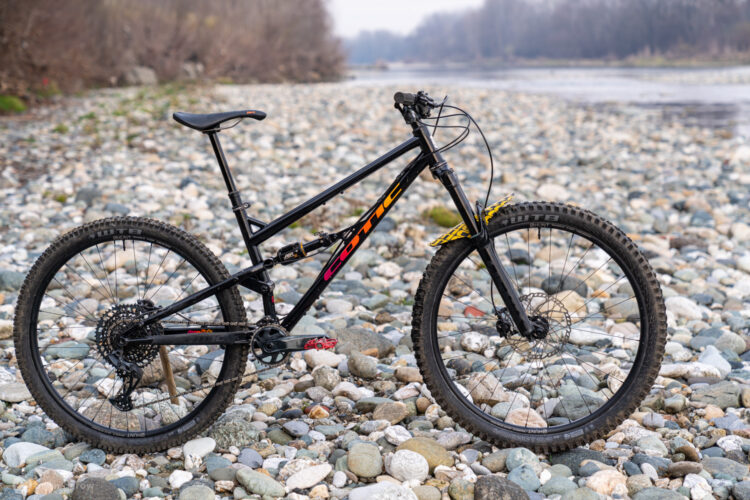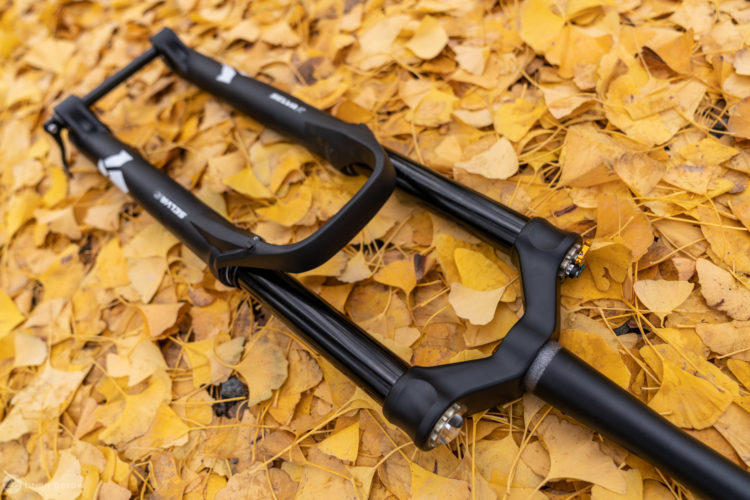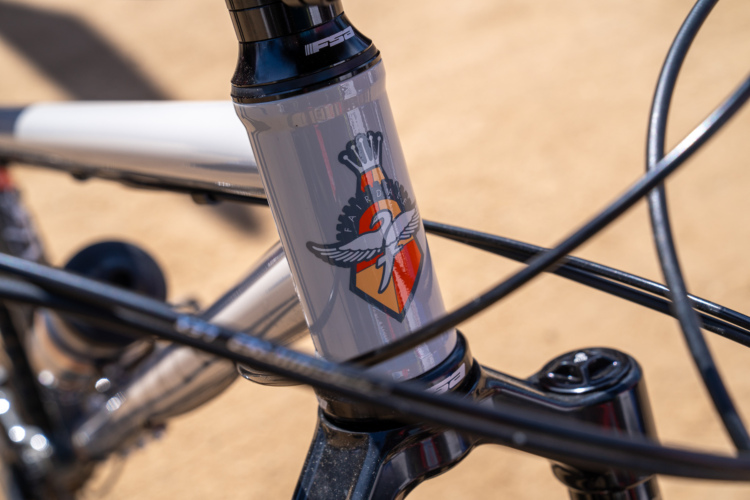
The fine suspension designers at X-Fusion have been churning out MTB dampers since 1999, and we’re excited to have some of their most recent hydraulic goods around to test and review. This week we received the Trace 36 HLR fork, H3C Coil shock, and the Manic dropper post that we’ve seen on a handful of review bikes. We’ll share a full review of these components in a few months so please let us know if you have specific questions you’d like addressed in those coming articles.
Trace 36 HLR fork

An X-Fusion Trace 36 HLR gravity fork ($949 MSRP, currently on sale at Wiggle for $799) has all of the usual top-shelf trimmings: it’s Boosty, tapered, has 36mm stanchions, and uses a burly crown and bridge for maximum stiffness at an average weight of 2000 grams. There’s a massive thirty click low-speed rebound range under the rider’s right leg and both low- and high-speed adjusters up top. On the opposite side of the crown, a single Schrader valve fills both air spring chambers. Sound familiar?
The fork we’ll be testing is a 29″ x 170mm model with a 44mm offset, damped by the brand’s HLR sealed bladder cartridge. The recommended air pressure settings are notably low, suggesting that this damper might have a heavier tune than some. Alternatively, the pressure chart might be off base, as most of them tend to be. We’ll be sure to test their suggested settings first.
H3C Coil

With its “metric trunnion only” modern fittings, the H3C shock also resembles the best coil dampers on the market. It has both low-speed compression and rebound damping adjustments, a finger-friendly preload collar, and a three-position climb switch to firm things up. The external reservoir is smaller than the Formula Mod coil that we recently tested, opening up a little extra space in the front triangle.
The X-Fusion spring calculator recommended we use a 400lb. spring on the Privateer 161 test bike, but they sent a 450lb. spring installed so we’ll give that a go first. The shock has a relatively shallow bottom-out bumper and we’ll swap in the lighter spring to get an idea of what the final millimeters of stroke feel like.
Check out this video of Brian Lopes testing the HC3 in the mountains of Santa Cruz, California.
Manic dropper post

We have used the Manic dropper on countless review bikes, but never officially reviewed the post itself. It loses a few points on the initial install, as the cable clamps at the seat post knarp instead of a quicker and simpler lever clamp. While this is not a deal breaker, we’ve appreciated that most dropper designers have switched to remote cable clamps.

The 1X remote lever is super adjustable, and it feels great so far. It can’t be mated with brake levers, so you’ll need to find a spot on your control center that plays well with other clamps. The roughly $200 Manic dropper post is currently sold out just about everywhere, though we did find a couple odd sizes available at Amazon.
Remember to add your questions about these components in the comments section below so we can be sure to answer them.

























